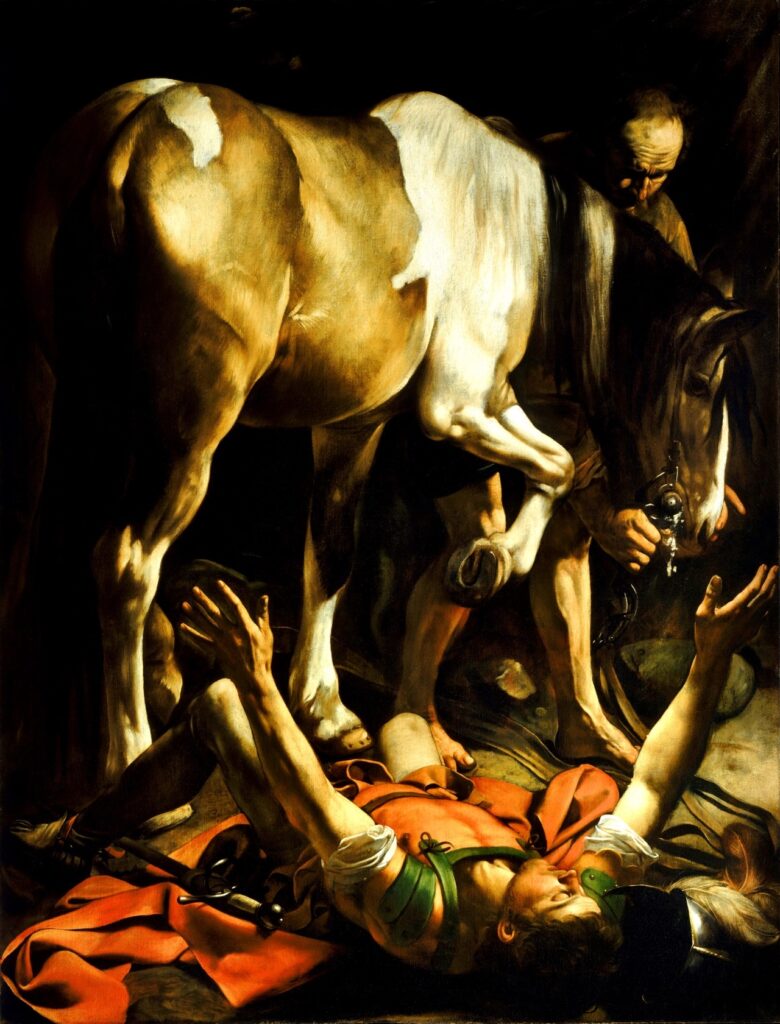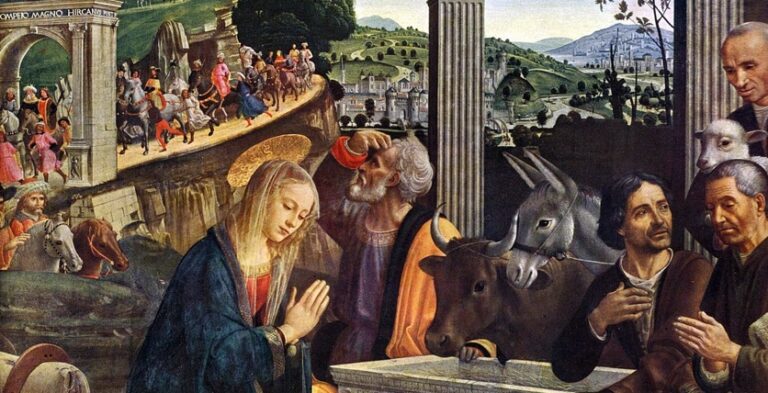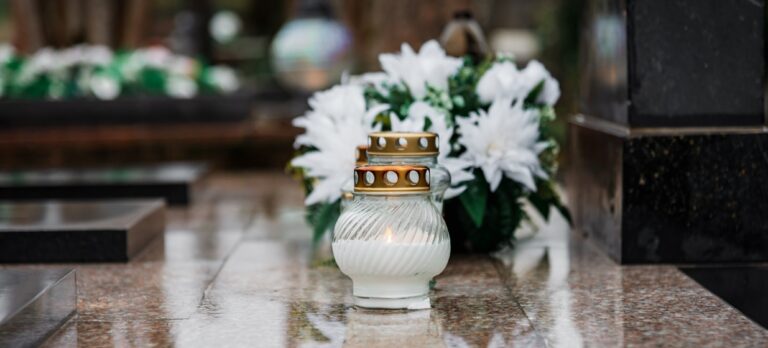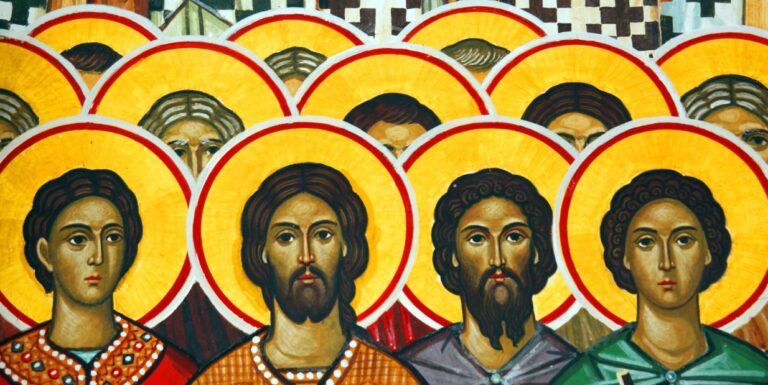
CONVERSION OF ST. PAUL

When you enter the Church of Santa Maria del Puopolo in Rome, you walk down the central aisle toward the ornate altar. We glance to the left to see a chapel which is dominated by three large masterpieces painted around 1600-1601. This is the Cerasi Chapel, named after the Pope’s moneyman at the time. The painting above the altar is Carracci’s Assumption of Mary, which gives its alternate name to the chapel, the Chapel of the Assumption. Flanking the Assumption of Mary on the side walls of the chapel are two paintings that pay tribute to the two saints most prominently associated with the founding of the Church in Rome: St. Peter and St. Paul. Both of these works were painted by Caravaggio, the gifted but notorious painter who lit his Biblical scenes with drama and contrast.
On this day when we celebrate the Conversion of St. Paul, we see why Caravaggio would have identified with Saul who became St. Paul. Saul persecuted early Christians and abetted in the stoning of these martyrs. Caravaggio, although a gifted depicter of Biblical scenes was prone to violence and rowdiness, as borne out by his Rome court records. His paintings are full of tension. In this canvas, a blinded Saul reaches up toward the light which he must sense rather than see. The light is Jesus who is asking, “Saul, Saul why do you persecute me?” We can imagine Caravaggio, a victim of his own passions reaching for this moral light, aware of his own shortcomings, longing for conversion.
Saul’s world has been turned upside down in his encounter with Christ on the Damascus road (Acts 9:1-9), as shown literally by Caravaggio. He is on his back reaching heavenward. While this moment is a dramatic change for Saul, it is not the end of his journey of conversion. It is only days later that he gets his new name, Paul, as a sign of his new identity. This conversion, however, was ongoing discernment of path of holiness: “Do not be conformed to this world, but be transformed by the renewing of your minds, so that you may discern what is the will of God – what is good and acceptable and perfect (Romans 12:2).” As Paul was challenged by new circumstances in his travels, he looked for the glimmers of grace among his companions and audiences to discern God’s goodness, truth and beauty. New questions about what it means to be a follower of Christ caused him to reflect and grow: Who is a Christian? How are Christians related to the Jewish people? What virtues are fundamental? How do we relate to each other in the Church? How are we saved? What does the resurrection mean? Questions lead to ongoing conversion.
As it was with Paul, so it is with us. Let us embrace the questions that challenge us; they lead us to our own ongoing conversions. Discerning questions open us to the flow of the Holy Spirit. They are little prayers that guide us on our own Caminos through the topography of our lives. Each day brings us new challenges and new questions. Some may knock us off our horses, but most are subtle questions that arise when we open gates to new neighbours and cross bridges to different ways of thinking. Do we have the eyes to acknowledge the questions around us and the courage to respond?
Les Miller is a husband, dad, grandfather and catechist. He has served the Catholic education community for 40 years as teacher, chaplaincy team leader, Department Head. AQ Instructor, textbook writer, and Religious Education and Family Life Consultant. Les authored the 25 Questions Series, Words for the Journey and award-winners Catholic Teacher’s Companion and Northern Light. Currently, he is an instructor and advisor with the Archdiocese of Toronto’s online Catechist formation program and lead contributor to the St. Monica Institute’s series on praying with art, Abide in Beauty.


